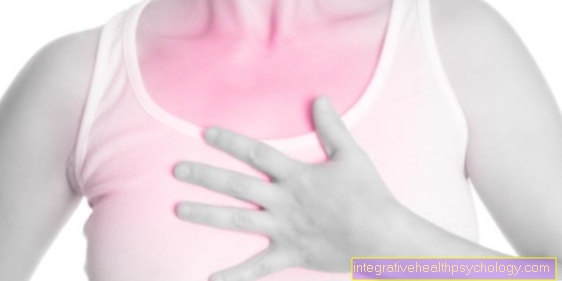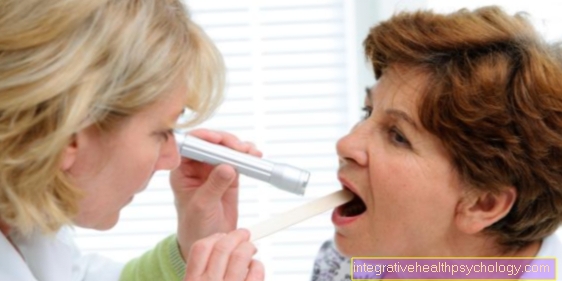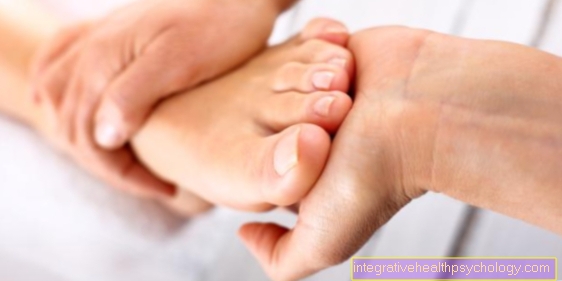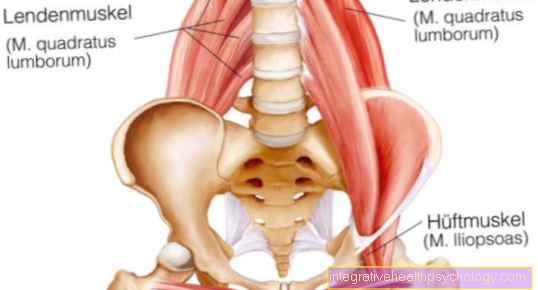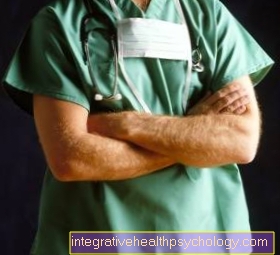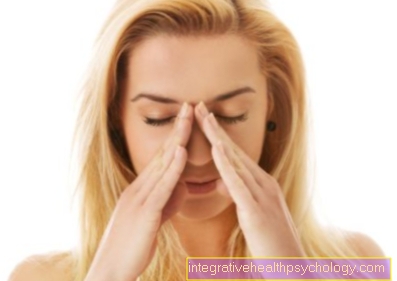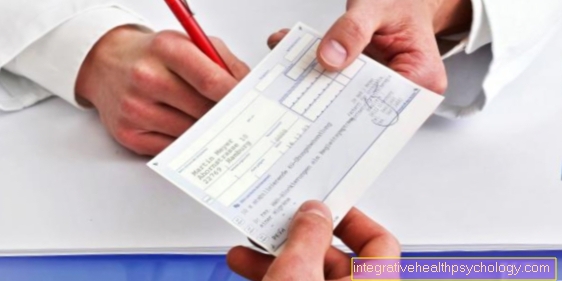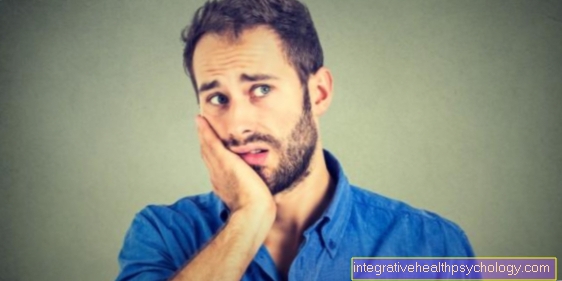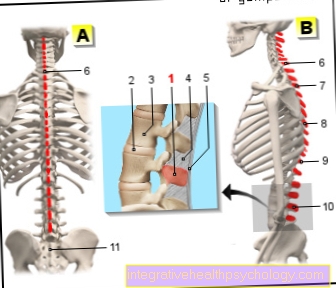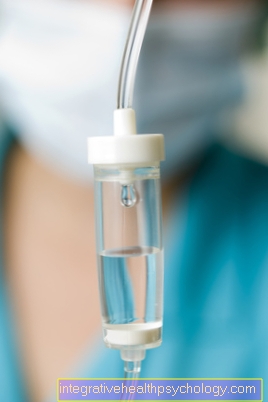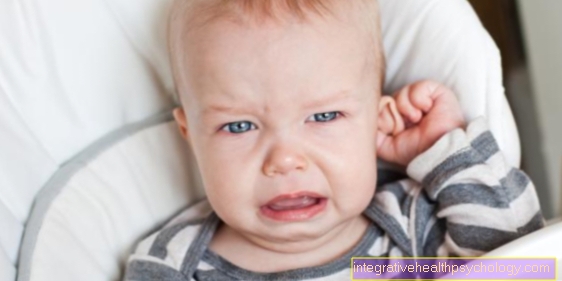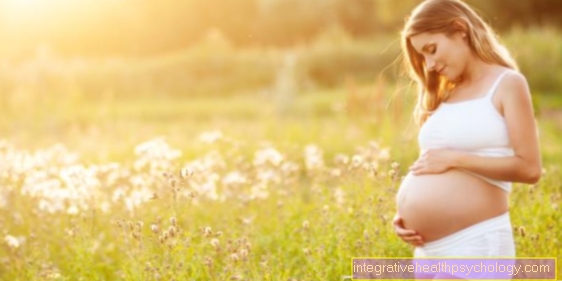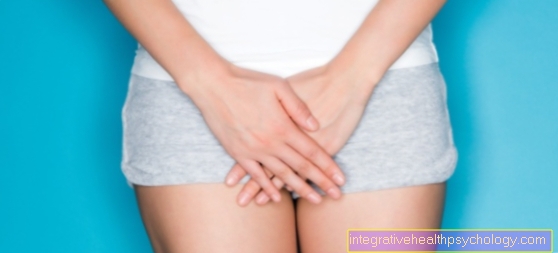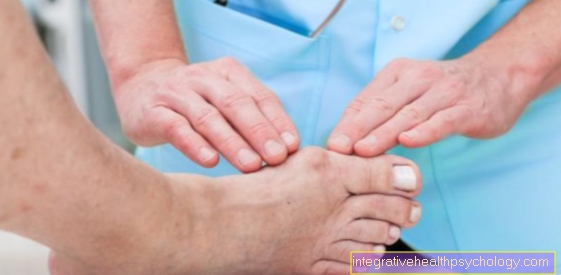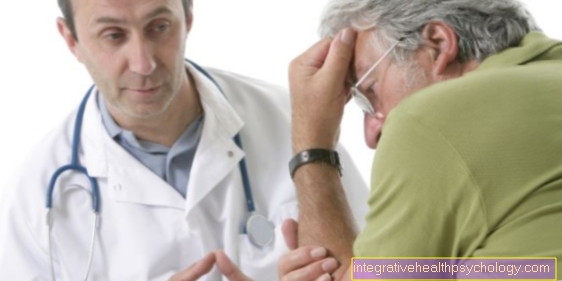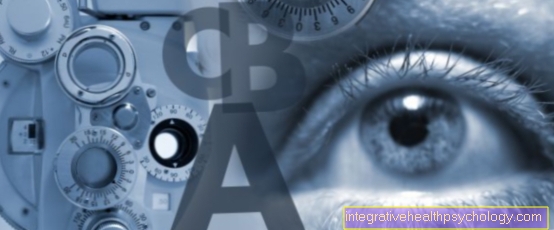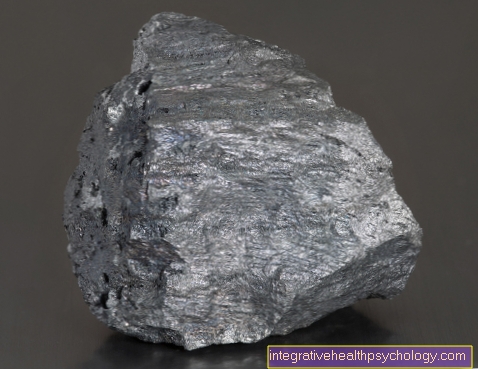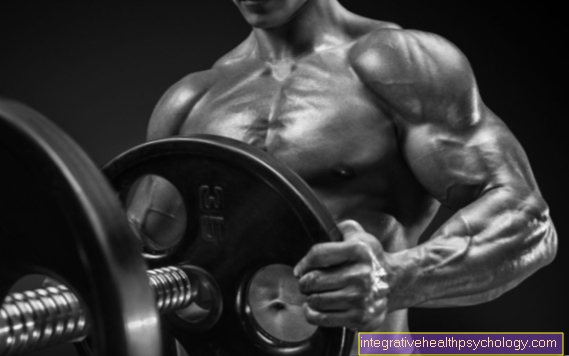Relaxation
introduction
Relaxation is understood to be a procedure in which an attempt is made spiritual or physical To reduce or regulate states of excitement. A state of serenity and well-being is always aimed for. The relaxation technique is understood to be a psychological training process that specifically reduces the psychological activity in relation to symptoms. In addition to autogenic training, the most common relaxation methods include progressive muscle relaxation, autosuggestion, biofeedback training, yoga, meditation and, above all,
On the physiological level, relaxation causes a decrease in muscle tone, heart rate and breathing rate. On the psychological level, relaxation causes a affective indifference, Raising the threshold of perception and mental and mental freshness. In competitive sports, relaxation techniques are used specifically to avoid stressful situations before the competition. Targeted relaxation also results in a better ability to regenerate and thus enables a higher frequency in the training units. Targeted relaxation is a lengthy process that can only be realized through practice.
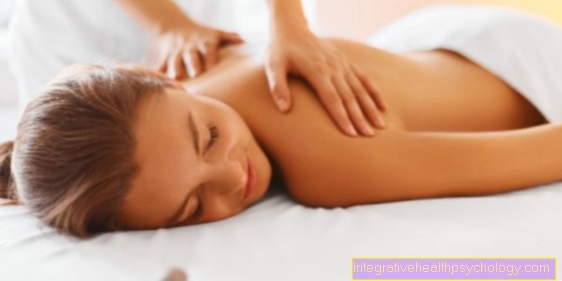
impact
As mentioned above, relaxation is always aimed at positive effects on the neural level. The Parasympathetic nervous system activated and the Sympathetic inhibited.
At the muscular level, relaxation aims at:
- Decrease in muscle tone
- Lowering the Heart rate
- Lowering the breathing rate (decreased oxygen consumption)
- Lowering the Blood pressure
On a psychological level:
- Improve well-being
- Improved ability to concentrate
- General satisfaction
- Balance
- Lowering the feeling of stress
The aim of relaxation is to resolve current and chronic states of tension. The various relaxation techniques are mostly used in addition to conventional therapeutic procedures.
Overview of relaxation techniques
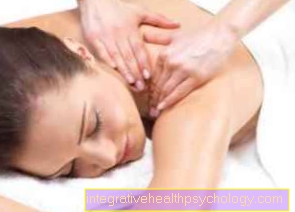
As in all other life situations, targeted relaxation can be learned through various techniques. In a constantly recurring situation there is conditioning in the central nervous system. With sufficient practice, you can relax earlier and more effectively in everyday situations. Relaxation, like the stressful situation, is subject to the psychophysiological reaction. Some relaxation techniques are primarily aimed at physical processes in order to influence psychological processes. (please refer Progressive muscle relaxation) It should be noted, however, that sufficient exercise lasting several weeks is necessary.
You can also read an article from our partners about this: Relaxation techniques.
Autogenic training and progressive muscle relaxation
The first group of relaxation techniques are autogenic training and progressive muscle relaxation. These two procedures are the most important procedures of today's conventional medicine and were specially developed to practice a relaxation reaction of the body. With both techniques, it is advisable to have the instruction carried out by a competent person. However, there are also books and audio CDs with which you can take the first steps yourself.
The autogenic training was developed in the 1930s, is more of a psychological relaxation technique and works on three levels.
At the "lower level" the autogenic training takes place with simple formulas like: "The legs are heavy". Through this self-directed relaxation ideally, the body comes into a state of recovery. In addition to the lower level, there is also the intermediate level and the upper level.
Be in middle school individual needs of the practitioner processed and in the upper level it is about deep memories, feelings and thoughts. The levels still differ in their duration of use, the lower level is more suitable for short-term therapy, the upper level is used more for longer therapy times.
The Progressive Muscle Relaxation (or muscle relaxation, PMR) was developed around the same time as autogenic training. In this form of relaxation, the participant should specifically tense and relax individual muscles and muscle groups. It is particularly important to feel the difference between the state of tension and relaxation. For example, muscle tension is related to feelings such as fear and discomfort. Muscle relaxation can therefore have a direct impact on wellbeing. PMR serves to achieve the following goals:
- general health should be promoted
- Stress and tension should be released and relaxed
- the ability to concentrate should be increased
- the ability to self-regulate should be improved
- the perception of one's own body is in the foreground.
Progressive muscle relaxation is mainly about controlling the various muscle groups, observing and feeling the different states of tension and relaxation and, above all, the targeted relaxation of individual muscles and muscle groups.
Meditative relaxation techniques
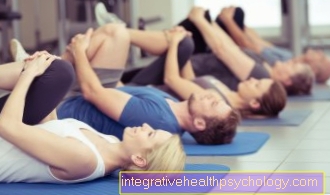
Further exercises and procedures for relaxation can be summarized under the meditative procedures. These include, for example, yoga, meditation, breathing exercises, eye exercises and quick relaxation exercises.
You can find more information on this topic here: meditation
Yoga is one of the oldest ways of keeping the body healthy through the interaction of body, mind and soul. In yoga, a distinction is made between postures (asanas), breathing exercises (pranayamas) and concentration and relaxation exercises. If yoga is practiced regularly, you can often see an optimization between physical and mental well-being after a certain time. Yoga helps the body to stay in balance or to find its balance. Concentration disorders, high blood pressure and stomach problems should also be improved through yoga. In today's society, yoga is considered the most effective and popular holistic relaxation measure. In Europe "Hatha Yoga", Kundalini Yoga "and" Power Yoga "are the best known and most widespread techniques. Hatha Yoga is characterized by simple body and breathing exercises and focuses more on relaxation. Kundalini Yoga, on the other hand, is a little more spiritual but also more dynamic and the breathing is more pressed. Power Yoga is one of the newer forms of yoga and, for example, combines the different body positions of the asana.
You can also find more information on this topic here:
- yoga
- Pilates
The meditation can be further subdivided into different sub-areas. These include Za-Zen, Qigong, Tai Chi, Celtic Meditation, Transcendental Meditation and Advaita Meditation. All of these exercises serve to do the Focusing inward and thereby to achieve an altered state of consciousness through the one effective and deep relaxation becomes possible. The Za-zen comes from Japanese sword fighting and is performed kneeling. The eyes are closed except for a small slit and the breathing is shifted deep into the stomach and the concentration is completely directed towards future tasks.
At the Qigong it is about the life energy in the body and the control over it. The life energy should be felt, strengthened and directed through breathing and movement exercises.The forces of nature should be used positively to alleviate physical complaints such as high blood pressure, heart problems, asthma or chronic pain.
You can read more information on this topic here: Qigong
Tai chi is very closely related to Qi-Gong. It is also about feeling, strengthening and guiding the life energy. However, the breathing and movement exercises from Kung Fu and other Asian martial arts are chosen so that someone who practices Tai Chi can defend himself effectively in emergency situations.
Another variation on meditation is that transcendental meditation where thoughts are turned inward on a deeper level. The goal is to get to the source of the thoughts and thereby that To calm the nervous system, to optimize the blood circulation and to improve learning and performance to contribute. The general state of mind also improves, and aggression and hostility can be reduced.
Advaita meditation is almost identical to transcendental meditation, but differs in a few areas. The aim here is to improve the health effects, especially in the mental and physical area personal aspects are in the foreground here.
Breathing exercises
Breathing exercises can be done anywhere and are very good for relaxing and relieving stress. Variants are, for example, "counting breaths", "exhaling longer", "tension and relaxation while breathing" and "inflating the lungs". Breathing exercises serve to relax, to reduce stress and to prepare for further relaxation exercises.
Read more on the topic: Breathing exercises to relax
Relaxation techniques with the eyes
You can also perform relaxation techniques with your eyes. The eyes in particular are often very "stressed" and our organs often have the least recovery. Especially people with a high percentage of PC or screen work expose their eyes to a high level of strain and thus high stress. With simple exercises you can relieve the eyes and reduce stress. Movements in the dark are performed with your eyes closed. The gaze is then directed alternately from above to the lower edge of the eye and to the sides, so that the eye is moved several times in all directions. Finally, you can let your eyes circle several times in both directions. The darkness relaxes the eyes and the movements in all directions train the mobility of the eyeball and strengthen the eye muscles.
Another exercise to strengthen the eye muscles is called: "Movement with the finger". The index finger is held at a distance of approx. 20 centimeters in front of the face and fixed with the eyes. Now you can begin to draw shapes, letters, figures and numbers in the air with your finger and follow them with your eyes.
Another exercise that gives the eyes more rest and relaxation is the eye shower, in which you rinse your closed eyes several times with cold water before going to bed. The second round is then carried out with lukewarm water. This “exercise” can be done the other way around in the morning (first lukewarm, then cold water) and, like brushing your teeth, you can do it twice a day as a ritual.
Biofeedback
One of the newer relaxation techniques is that Biofeedbackthat was developed and researched in the 1960s. The practitioner is informed about the biological processes and data informed from his body that he normally does not notice. Pulse, the conductance of the skin, brain waves and other acoustic and physical parameters measured and explained to the practitioner, reported and thus made aware. Thereby one can learn to influence the body functions in a demonstrable way. Biofeedback can be viewed as an independent relaxation method, but can also be used in addition to or in preparation for the other relaxation techniques. Unfortunately, nowadays, biofeedback can only be carried out in certain centers that have the appropriate equipment available.
You can read more information on this topic here: Biofeedback training


